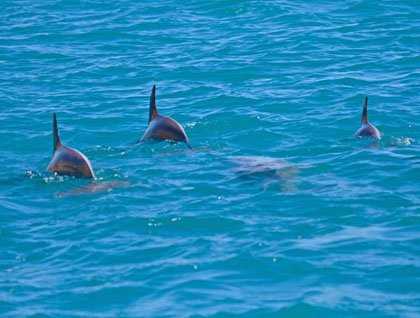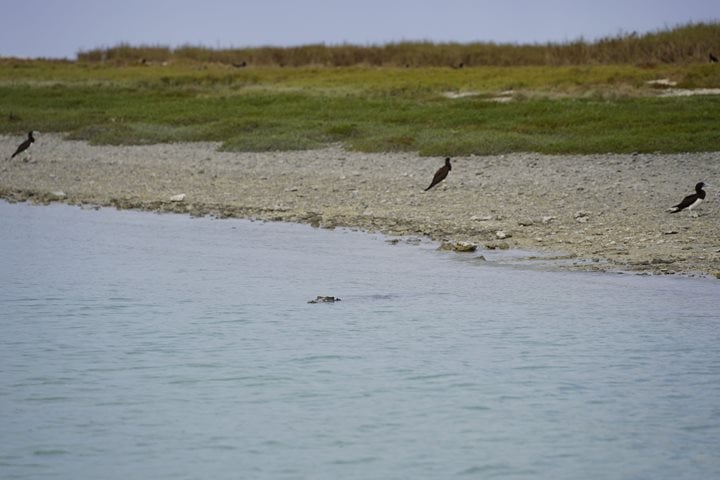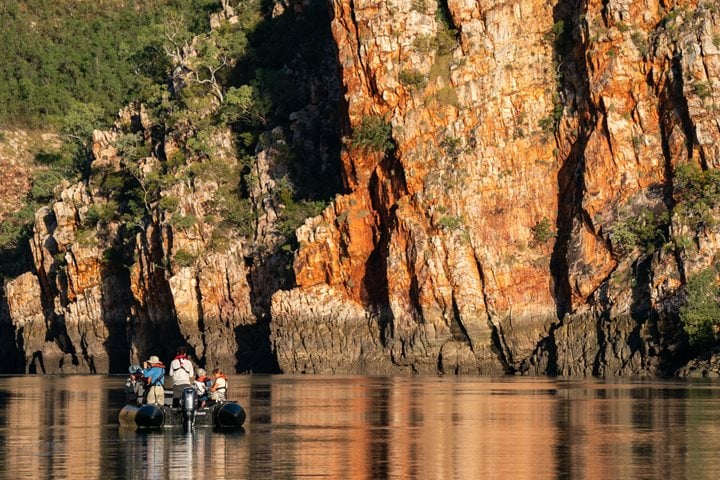Pulling into the anchorage of the expansive bay known as Yampi Sound this morning gave us a vibrant vista of rusty coloured Pentecost Sandstone, providing great landscape photo opportunities as the orange hues contrasted between the complementary rich blue of the clear sky above us and the azure Indian Ocean we were floating on.
Yampi Sound (from the aboriginal word for water, “Yampee”) is a part of the Buccaneer Archipelago. These surrounding islands, numbering over 800, were named in 1821 by Captain Phillip Parker King, in commemoration of William Dampier’s visit in 1688. The region has since been explored by pearlers in the 1870s, who used the iron-ore laden sandstone as ballast in their luggers and later by mining operators who have established open-cut mines on the nearby Koolan Island, where some of the richest (average purity of 69 % ) iron ore is extracted to this day.
We spent our morning exploring was spent in Zodiacs to examine the fascinating geological formations found in the area, such as synclines and anticlines, both products of the buckling and folding of sedimentary rock over millions of years. After a short time several small pods of inshore bottlenose dolphins ventured close to the Zodiacs, breaching as they took their next breath, before diving to feed below for a period of 2-3 minutes before surfacing around us once again.
We continued onto Nares Point which offered us spectacular examples of Elgee siltstone that appeared to have been expertly shaped and smoothed by the abrasive qualities of wind and water. There was a slight conflict of interest as we looked out on the peaceful waters to the pristine view of Nares Point and its amazing geological formation, but not too far away, the man-altered moonscape of the Mt Gibson iron ore mine on neighbouring Koolan Island.
After a hearty lunch on board National Geographic Orion we went for a short cruise to the west end of Yampi Sound and made our way up a secluded creek system (ominously called Crocodile Creek) to a small waterfall fitted with a stainless steel ladder, courtesy of the mining industry. The creek actually gets its name from the crocodile-shaped rocks near the entrance to the area. However, just to be sure, a scout was sent an hour earlier to ensure no unwelcome visitors were in the vicinity!
On arrival the tide was high so it was just an easy step off the Zodiacs onto the concrete path and a short walk to the next level where a beautiful clear freshwater pool is fed from a small perennial waterfall. It was an ideal place to take a swim in a Kimberley waterhole that is otherwise the domain of the Saltwater Crocodile.
By late afternoon the tide had dropped considerably making it an interesting climb down the ladder back into the Zodiacs. After an exciting day it was back on board to be entertained by Brent’s magnificent photography and then to learn more from the whole photo team.
Finally, the day finished with Captain Brian Larcombe’s welcome cocktail party and dinner in the restaurant.







